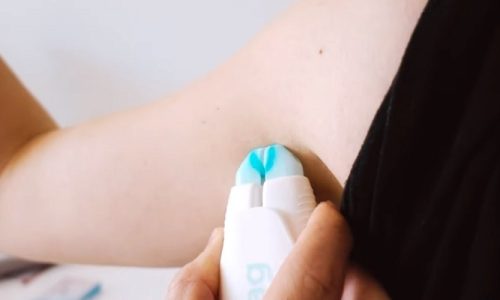To remove tiny cactus needles from your skin, use tape to gently lift them out. Press down firmly on the affected area with the tape and then peel it off to remove the needles.
If you’ve ever brushed up against a tiny cactus and found yourself with a few pesky needles lodged in your skin, you know just how irritating and painful it can be. Removing these tiny cactus needles can be a tricky task, as they tend to embed themselves deep in the skin and can be quite difficult to extract.
However, with the right technique and a little patience, you can effectively remove the needles and alleviate the discomfort. We’ll explore some effective methods for getting tiny cactus needles out of your skin, so you can get back to feeling comfortable and pain-free as quickly as possible.
The Nature Of Tiny Cactus Needles
Tiny cactus needles can be a real pain when they get stuck in your skin. Fortunately, there are a few simple ways to remove them safely and effectively. From using tweezers to using adhesive tape, these methods will help you get those pesky needles out without causing further irritation.
Overview Of Tiny Cactus Needles And Their Potential Harm
Cacti are fascinating and beautiful plants, known for their ability to survive in harsh desert conditions. However, their charming aesthetics come with a tiny, needle-like defense mechanism that can cause discomfort if they become embedded in our skin. Understanding the nature of these tiny cactus needles is crucial to effectively removing them without causing further irritation.
Different Types Of Cacti And Their Needle Characteristics
Cacti come in various shapes, sizes, and needle structures, making it essential to know what you’re dealing with. Familiarizing yourself with different cacti and their needle characteristics can help you approach the removal process with caution and precision.
| Cactus Type | Needle Characteristics |
|---|---|
| Saguaro Cactus | The saguaro cactus has long spines that can easily penetrate the skin. |
| Barrel Cactus | Barrel cacti are known for their numerous shorter spines, which can be difficult to remove if deeply embedded. |
| Cholla Cactus | Cholla cacti have barbed spines that easily attach to clothing and skin, making them challenging to remove without causing further irritation. |
When dealing with tiny cactus needles, keep in mind that they can vary in size and structure, depending on the cactus species. Some cacti may possess robust and easily visible spines, while others have barely visible glochids – tiny hair-like needles that are often even more troublesome. These glochids are so small that they may go unnoticed until you feel the discomfort, making them tricky to remove.
Safe Removal Techniques For Tiny Cactus Needles
Removing tiny cactus needles from the skin requires caution and precision to avoid any secondary issues. Here are some safe and effective techniques to consider:
- Tweezers: Sterilize a pair of fine-pointed tweezers using rubbing alcohol and carefully grip the needle close to the skin. Gently pull it out in the same direction it entered to minimize irritation.
- Tape: Apply sticky tape (such as duct tape or adhesive tape) over the affected area. Press down firmly and then peel the tape off in one swift motion, pulling the needles out along with it.
- Warm Water Soak: Soak the affected area in warm water for a few minutes to help soften the skin and loosen any embedded needles. Use gentle circular motions with a washcloth to encourage the needles to fall out.
- Antibacterial Ointment: After removing the needles, apply an antibacterial ointment to prevent infection and promote healing.
Preparing For Needle Removal
Discover effective techniques to safely remove tiny cactus needles from your skin, ensuring a painless experience. Expert tips and step-by-step instructions will help you prepare and remove those stubborn needles without causing further discomfort or damage.
Gathering Necessary Supplies For Needle Removal
Before attempting to remove tiny cactus needles from the skin, it is crucial to gather the necessary supplies for the process. These supplies may include:
- Tweezers with a fine tip
- Sterile needle or safety pin
- Rubbing alcohol or antiseptic wipes
- Cotton swabs
Importance Of Sterilizing Tools And Skin
Ensuring the tools and the affected area of the skin are properly sterilized is essential for preventing infection. Sterilizing the tools and the skin helps minimize the risk of introducing bacteria into the skin, which can lead to complications.
Ways To Numb The Affected Area For Pain Relief
To alleviate pain and discomfort associated with needle removal, numbing the affected area can be beneficial. This can be achieved through the following methods:
- Applying an ice pack or a cold compress to the area to numb the skin
- Using over-the-counter numbing creams or gels
Techniques For Removing Tiny Cactus Needles
When dealing with tiny cactus needles embedded in your skin, it’s essential to employ effective techniques for their removal.
Using Adhesive Tape Or A Lint Roller To Remove Surface-level Needles
If you’ve brushed against a cactus and have surface-level needles stuck to your skin, a quick and easy method for removal is using adhesive tape or a lint roller. Simply press the tape or roller against the affected area and gently pull away to lift the needles off the skin’s surface.
Tweezers: The Go-to Tool For Extracting Embedded Needles
Tweezers are indispensable for removing embedded cactus needles. Before using tweezers, sterilize them with rubbing alcohol to minimize the risk of infection. Carefully grip the needle as close to the skin as possible and pull it out in the direction it entered. Be cautious not to break the needle, as this can lead to further complications.
Using A Magnifying Glass To Aid Needle Visibility And Removal Accuracy
A magnifying glass can be incredibly helpful when dealing with tiny cactus needles that are difficult to see with the naked eye. By using a magnifying glass, you can enhance visibility and ensure the accurate removal of each needle. This is especially beneficial for needles that are deeply embedded and hard to spot without the aid of magnification.
Tips And Tricks For Difficult Needle Removal
Dealing with cactus needle pricks can be a painful experience, especially when the tiny spines embed themselves in your skin. If you find yourself in this prickly situation, don’t fret! There are several strategies you can employ to remove those stubborn cactus needles effectively. In this section, we will outline three effective methods: soaking the affected area in warm water, applying a baking soda and water mixture, and seeking professional medical assistance when needed.
Soaking The Affected Area In Warm Water
One simple and effective method to facilitate needle removal is by soaking the affected area in warm water. This helps to soften the skin, which can make it easier to extract the cactus needles. Here’s how you can do it:
- Fill a basin or a bowl with warm water.
- Ensure the water is comfortably warm, but not scalding hot.
- Place the affected body part into the water and let it soak for 10-15 minutes.
- During the soak, gently massage the area with your fingers to provide additional relief and encourage the needles to loosen.
- After soaking, carefully inspect the area for any visible cactus needles that have emerged from the skin’s surface.
This method helps soften the skin, making it more pliable and less resistant to needle removal. It is particularly useful for surface-level or slightly embedded cactus needles.
Applying A Mixture Of Baking Soda And Water To Ingrown Or Deeply Embedded Needles
If the cactus needles have become ingrown or deeply embedded in the skin, a mixture of baking soda and water can be an effective way to draw them out. Follow these steps:
- Create a paste by mixing equal parts baking soda and water.
- Gently apply the paste to the affected area, covering it completely.
- Leave the paste on for around 15-20 minutes to allow it to work its magic.
- Rinse off the paste with warm water, gently patting the area dry afterwards.
- Inspect the skin carefully, and with clean tweezers or a clean sewing needle, carefully remove any visible cactus needles that have emerged.
The alkaline properties of baking soda can help draw out the needles, reducing inflammation and relieving discomfort. Always exercise caution when using sharp objects and be mindful not to dig into the skin.
Seeking Professional Medical Assistance For Persistent Or Sensitive Cases
In some cases, cactus needles can be deeply lodged or cause severe irritation, making self-removal difficult or potentially hazardous. In such instances, it is advisable to seek professional medical assistance. A healthcare professional will have the necessary tools and expertise to remove the needles safely. They can also provide appropriate care and treatment for any associated symptoms, such as swelling or infection.
Remember, if you experience persistent pain, redness, swelling, or signs of infection, it’s important to consult a healthcare professional promptly.
Aftercare And Prevention
Properly cleaning and treating the skin after needle removal can help prevent any further irritation or infection. It’s important to take immediate action to ensure proper healing. Additionally, learning how to prevent future needle mishaps and recognizing signs of infection is crucial. Here are some essential tips for aftercare, prevention, and knowing when to seek medical help.
Properly Cleaning And Treating The Skin After Needle Removal
After successfully removing the tiny cactus needles from your skin, the next step is to clean and treat the affected area. Follow these simple steps to promote quick healing:
- Gently wash the area with mild soap and warm water. Ensure that all traces of dirt and debris are removed. Avoid scrubbing too vigorously, as it can further irritate the skin.
- Rinse the area thoroughly and pat it dry using a clean, soft towel. Avoid rubbing, as it may aggravate the skin.
- Apply a thin layer of over-the-counter antibiotic ointment to the affected area. This will help prevent infection and speed up the healing process.
- Cover the area with a sterile bandage to protect it from further irritation and external contaminants. Change the bandage daily or as needed, ensuring that the area is always clean and dry.
- While the area heals, avoid scratching or picking at the skin, as this can introduce bacteria and delay the healing process. Keep a close eye on the area to ensure it is healing properly.
Tips For Preventing Future Needle Mishaps
To avoid finding yourself in a similar situation in the future, follow these helpful tips to prevent tiny cactus needle mishaps:
- When handling cacti or other prickly plants, always wear thick gloves to protect your hands from accidental needle pricks.
- Be cautious while gardening or working near cacti. Pay attention to your surroundings, especially in areas with dense cacti growth. Avoid coming into contact with them if possible.
- Use long-handled gardening tools to maintain a safe distance between yourself and the cacti while working.
- If you accidentally brush against a cactus, remove any needles immediately to prevent them from penetrating deeper into your skin.
- Consider trimming or relocating prickly plants in your garden to reduce the risk of needle mishaps, especially if you have children or pets.
Recognizing Signs Of Infection And When To Seek Medical Help
While proper aftercare and preventive measures can significantly reduce the risk of infection, it’s important to be aware of the signs that indicate a potential problem. If any of the following symptoms persist or worsen, seeking medical help is advised:
- Increased redness, swelling, or warmth around the affected area
- Persistent pain or tenderness that doesn’t subside
- Pus or discharge from the site of the wound
- Development of a fever
- Red streaks extending from the wound
Remember, prompt medical attention is crucial when dealing with persistent or worsening symptoms. If unsure about the severity of the situation, it’s always better to consult a healthcare professional for proper evaluation and treatment.

Credit: www.mynameissnickerdoodle.com
Frequently Asked Questions Of How To Get Tiny Cactus Needles Out Of Skin?
How Do You Remove Tiny Cactus Needles From Skin?
To remove tiny cactus needles from your skin, gently use tweezers to pull them out. Be sure to clean the affected area afterwards.
What Should I Do If I Get A Cactus Needle Stuck In My Skin?
If a cactus needle gets stuck in your skin, use clean tweezers to gently remove it. If you can’t remove it, seek medical attention.
Can Cactus Needles Cause An Infection?
Yes, cactus needles can cause an infection if not properly treated. Make sure to clean the area and apply an antiseptic after removing the needles.
Are There Any Home Remedies To Remove Cactus Needles From Skin?
Along with using tweezers, you can also try using adhesive tape to remove cactus needles from your skin. Gently press the tape onto the affected area and peel it off.
How Long Does It Take For Cactus Needle Wounds To Heal?
The healing time for cactus needle wounds varies, but generally, they should heal within a week or two with proper wound care and hygiene.
Conclusion
Dealing with tiny cactus needles in your skin can be a painful experience. However, by following the proper techniques, you can effectively remove them without causing further harm. Remember to use gloves, tweezers, adhesive tape, or glue to gently extract the needles.
Additionally, keeping the affected area clean and applying a soothing ointment can aid in the healing process. By taking these steps, you can overcome this prickly situation and restore comfort to your skin.







